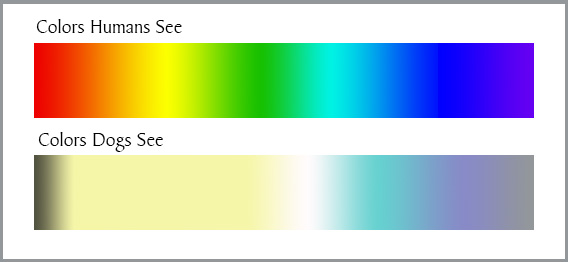Dogs are known for their exceptional sense of smell and hearing, but what about their vision? Can they see all the colors that humans can see? This is a question that has puzzled many pet owners, and in this article, we will explore the topic in-depth.
Understanding Color Vision

Color vision is the ability to perceive different wavelengths of light, which are interpreted by the brain as different colors. Humans have three types of color receptors in their eyes, called cones, which allow us to see a wide range of colors. These cones are sensitive to red, green, and blue light, and our brain combines the information from these cones to create the full spectrum of colors that we can see.
Dogs, on the other hand, have only two types of cones in their eyes, which means that they have a limited color vision. Their cones are sensitive to yellow and blue light, so they can see some shades of these colors, but they cannot distinguish red and green hues.
How Dogs See the World

While dogs may not see the world in the same way that humans do, their vision is still highly developed and allows them to navigate their environment with ease. Dogs have a wider field of vision than humans, and their eyes are more sensitive to low light levels, which makes them excellent at seeing in the dark.
Dogs also have a keen sense of motion detection, which is why they are able to track moving objects so well. This is because their eyes are designed to detect movement, and they have a wider range of peripheral vision than humans.
How Color Blindness Affects Dogs

Color blindness is a genetic condition that affects both dogs and humans. Dogs can be born with color blindness, or it can develop later in life due to age or disease. Color blindness in dogs is more common in certain breeds, such as Australian Shepherds and Siberian Huskies.
While color blindness may seem like a disadvantage, it does not usually affect a dog's quality of life. Dogs rely more on their sense of smell and hearing than their vision, so their color vision is not as important to them as it is to humans.
Conclusion
In conclusion, dogs cannot see all colors, but they can still see well enough to navigate their environment and perform their daily tasks. While color vision may not be as important to dogs as it is to humans, it is still interesting to understand how our pets perceive the world around them.